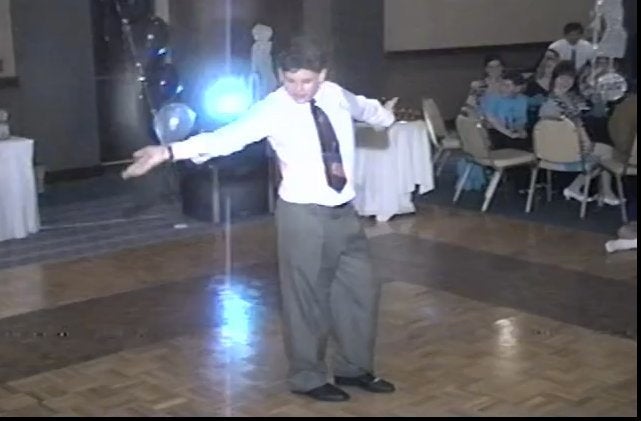
You've probably seen it by now, the video of a boy wearing a white shirt with a huge painting of Madonna on the back. He confidently takes the stage and dances alone to Madonna's "Vogue." The boy's dancing isn't fantastic, but the video is irresistible. It's his Bar Mitzvah and he'll dance if he wants to! This boy is the perfect reminder that coming of age rituals and their parties celebrate children and the changes that they are experiencing.
Although many cultures have coming of age rituals, in most of the U.S. three kinds of parties take center stage: Bar/Bat Mitzvahs (for Jewish kids at age 13), Quinceañeras (for Latina girls at 15) and Sweet 16 parties. Like the children who have them, these parties are undergoing changes and those changes have become big business.
Even more than weddings, the hosts of teenage coming of age parties are under pressure to do something "different" and new. Although people in their 20's and 30's may feel like they're on a "wedding circuit," in actuality, most people only attend one or two weddings a year, at most. But, if you're a Jewish 13-year-old, you probably know 20 other kids also having Bar or Bat Mitzvah parties that year. If you're the fourth party that month, you don't want to have the same theme or music as the other three. The same is true for teens having Quinceañera parties and Sweet 16 parties. Kids tend to socialize with other kids the same age, so everyone goes through the same events at the same time. This makes party planning difficult, but also more creative.
At GigMasters, we've certainly seen parents taking a creative approach when planning the parties. For Bar and Bat Mitzvahs we get requests not just for bands and DJs, but also for fortune tellers, magicians and even a Joan Rivers impersonator (the event had a red carpet theme). Sweet 16 Parties also run the gamut of entertainment options. Entertainment for Quinceañeras tends to be less diverse, with most people choosing DJs and bands, but that's changing as well. In 2011 and 2012 more people planning Quinceañeras hired caricature artists and other variety entertainers than in previous years. The event itself is also changing. Estaban Herrera, a Flamenco Guitarist who has played at both Quinceañeras and Sweet 16 parties has noticed that many Hispanic families in the U.S. are actually transitioning from Quinceañeras to Sweet 16 parties, a change that will certainly affect other trends for both kinds of parties.
As with weddings, not everyone is excited about the changes in these parties, especially when those trends involve money or adult behavior. DJ Tony Easterling has worked hundreds of Sweet 16 Parties in his career but was shocked by the playlist at recent Sweet 16. According to Tony, 90% of the music contained profanity and adult subject matter. When he contacted the parents to see if they'd prefer that he play the "cleaned up" version of the songs, he was told to play the original versions. Predictably, the guests at the party were dressed provocatively and danced provocatively as well.
People cite a variety of explanations for why spending has increased and behavior standards decreased at these events. Having a larger and more spread out family can greatly increase spending. After all, if people are flying in and staying in a hotel to attend your party you owe them more of a celebration. Fewer children being born to older parents creates more money to spend and less connection to youth culture. Add these to reality TV shows like MTV's My Super Sweet 16, which make over-spending and bad behavior the norm, and you have a different sort of party from in year's past.
Bar/Bat Mitzvah parties come under special attack for over-spending and inappropriate behavior because they are supposed to be part of a larger religious celebration. Planner Michele Schwartz of The Modern Jewish Mitzvah works with both weddings and bar/bat mitzvahs. She notes that the expectations of the party vary greatly depending on geography. Families in South Florida, New York City and California tend to be the most extreme in the celebrations, but second-tier markets such as Dallas and Houston have been experiencing changes for the past decade that are now filtering down to even smaller markets like Austin, Texas.
Michele believes a lot of the changes have to do with technology. There are so many more affordable options for things like lighting and photo montages than in years past that more and more families are choosing them. Michele also sees young teens constant exposure to video and technology creating shorter attention spans, which then require more excitement and entertainment at the events.
Although these changes can create more expensive events, they don't have to break the bank. Unlike weddings, you know exactly when your child's Sweet 16 or Bar Mitzvah is going to happen. For many families, this allows them to save the money necessary for the type of party they want to have years in advance. What's more, having a fun, unique celebration does not necessarily include a hefty price tag. Being creative with your entertainment choices can actually allow you to save money.
One of the biggest changes in the wedding industry in the past decade has been the move towards individualization. Brides and grooms no longer think that their wedding has to look or sound exactly like everyone else's. This has allowed couples to save money by focusing on the aspects that are important to them. If your child is approaching one of these coming of age parties and you're worried about the expectations and budget, remember that different doesn't have to mean expensive.
